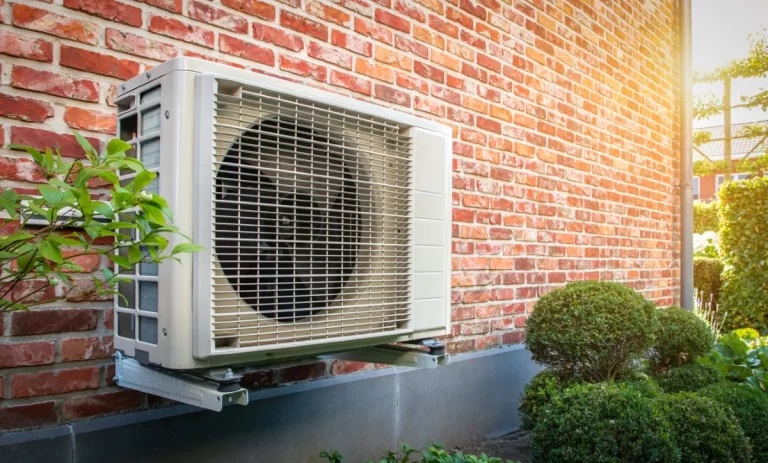Improving the efficiency of HVAC systems in older homes is essential for reducing energy consumption and enhancing the home’s overall comfort and air quality. Older homes often need help with heating, ventilation, and air conditioning (HVAC) due to outdated systems, poor insulation, and air leakage.
However, there are several strategies you can employ to boost the performance of your HVAC system and ensure a more sustainable and cost-effective operation. Read on to learn more.
Understand HVAC Terminology
Before exploring specific improvement strategies, it is crucial to familiarize yourself with common HVAC terms and concepts. This knowledge will help you make informed decisions about upgrades and maintenance.
Moreover, if you want a comprehensive glossary of HVAC terms, you can refer to resources that outline the key terminology used by industry professionals or consult reputable HVAC companies in your area.
Assess the Current System
Conducting a thorough assessment of the existing HVAC system is essential for determining the efficiency of an older home’s climate control. This process involves evaluating all system components’ age, condition, and efficiency, including the HVAC units and ductwork. Older equipment typically operates below current energy efficiency standards, leading to higher utility costs and reduced performance.
By engaging a professional HVAC technician to perform an energy audit and detailed system inspection, you can pinpoint inefficiencies and guide subsequent upgrades. This initial assessment sets the groundwork for making informed decisions about necessary improvements.
Upgrade to Energy-Efficient Equipment
Upgrading to energy-efficient HVAC equipment is a transformative step for enhancing the climate control of older homes. Contemporary HVAC systems incorporate advanced technologies that improve heating and cooling performance and significantly reduce energy consumption.
When shopping for new HVAC equipment, you should prioritize products bearing the ENERGY STAR label. This designation ensures that the equipment meets stringent energy efficiency criteria set by the U.S. Environmental Protection Agency. Such upgrades can lead to substantial long-term savings on energy bills and contribute to environmental conservation.
Improve Ductwork
Ductwork is a critical component of an HVAC system, especially in older homes, where ducts often suffer from poor sealing and inadequate insulation. These issues can cause considerable energy losses as heated or cooled air escapes from the system before reaching living spaces.
To combat this, you should invest in professional duct inspection and repair. A qualified technician can seal leaks and insulate ducts, significantly enhancing the system’s efficiency.
By improving ductwork, you can preserve the desired indoor temperatures and reduce strain on the HVAC system, prolonging its lifespan and improving cost-effectiveness.
Enhance Insulation and Seal Air Leaks
Enhancing insulation and sealing air leaks are pivotal for increasing the efficiency of HVAC systems in older homes. By improving insulation in walls, attics, and floors, you can maintain more consistent indoor temperatures, which reduces the workload on HVAC systems.
Additionally, sealing gaps around doors, windows, and other openings prevents the loss of conditioned air, further optimizing energy use. These improvements are cost-effective, provide significant energy savings, and enhance indoor comfort by minimizing drafts and cold spots.
Install Programmable Thermostats
Programmable thermostats offer a practical and efficient way to manage home heating and cooling systems. By allowing you to set heating and cooling schedules based on daily and weekly routines, these devices ensure that the HVAC system operates primarily when needed, reducing unnecessary energy consumption.
Upgrading to a smart thermostat enhances this functionality with features like remote control via smartphones and adaptive learning of preferences. These features further optimize energy usage and lead to significant cost savings over time.
Conduct Regular Maintenance and Cleaning
Consistent maintenance and cleaning are essential for maintaining an HVAC system’s efficiency, particularly in older homes. Routine maintenance tasks such as replacing air filters, cleaning air ducts, and ensuring vents are free from obstructions can help maintain optimal airflow and system efficiency.
Regular checks can also prevent minor issues from developing into major problems that require costly repairs. To ensure your system remains in top condition, you may benefit from setting up a maintenance schedule or entering into a service agreement with a reliable HVAC service provider.
Utilize Natural Ventilation
Leveraging natural ventilation can significantly reduce dependence on mechanical cooling systems, especially in older homes.
By strategically opening and closing windows to create a cross breeze, you can naturally exploit cooler outdoor air to reduce indoor temperatures. This method is particularly effective during cooler periods or climates where nights are significantly cooler than daytime temperatures.
By utilizing natural ventilation, you can reduce energy bills and enhance indoor air quality by circulating fresh air throughout the home.
Consider Alternative Cooling and Heating Options
Exploring alternative cooling and heating options, such as solar panels or geothermal systems, can be particularly beneficial for older homes. These renewable energy technologies can significantly decrease reliance on conventional HVAC systems, reducing energy consumption and lowering utility bills.
Solar panels convert sunlight into electricity that can power HVAC systems, while geothermal systems use stable temperatures underground to provide heating and cooling more efficiently than traditional methods. Both options represent sustainable investments that can improve home energy efficiency and contribute to environmental preservation.
Final Thoughts
Improving the efficiency of HVAC systems in older homes requires upgrading outdated equipment, enhancing the building envelope, and adopting smart technology. By taking proactive steps to address these areas, you can achieve a more energy-efficient home that offers comfort and cost savings.
Moreover, these improvements can contribute to a more sustainable living environment, aligning with broader environmental goals.

